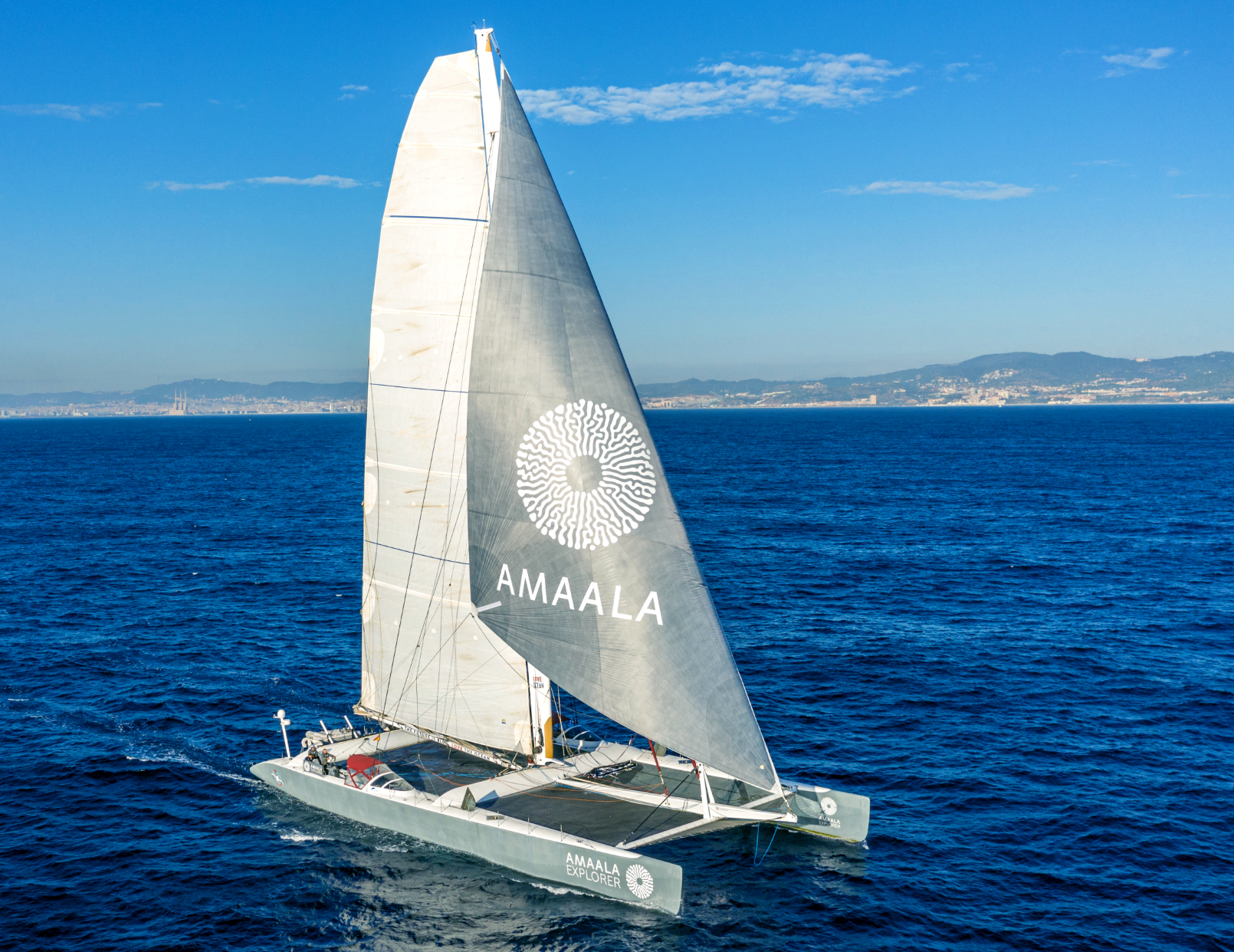AMAALA, the ultra-luxury destination located along Saudi Arabia’s north western coast, took to the seas with Monaco-based OceanoScientific on a two-week scientific expedition. The expedition was in line with AMAALA’s desire to measure and understand the impact of river water pollutants on human and sea life.
The expedition was undertaken with a two-fold objective to determine the nature and density of the chemical compounds that affect the marine environment. It also placed a wider focus on the impact of chemical contaminants on the ocean and human health, and validates the applicability of the expedition’s sampling method, using a cost-effective research alternative with a zero-carbon emission vessel.
Over the course of two weeks, the crew collected water samples from various points within a triangle of 1,500 nautical miles in the western Mediterranean.
These samples were handed over to the Institut Français de Recherche pour l’Exploitation de la Mer (Ifremer) by the crew and AMAALA Chief Executive Officer Nicholas Naples and Chief Sustainability Officer Brendan Jack at the last port of call in La Seyne-sur-Mer, France. The scientists at the Ifremer, who advised on the scientific aspects of the undertaking, will now quantify and analyse the concentration of metals and elements such as cadmium, lead, nickel and mercury, all of which can alter the composition of the sea and affect the marine food chain.
The expedition and the results unearthed as part of its study will inform AMAALA’s own conservation efforts. The Red Sea and the Mediterranean Sea are neighbouring seas and part of one global ocean system where changes in one, create ripples in the other. With its vibrant coral gardens and rich underwater life, the Red Sea coast at AMAALA has a thriving ecosystem that the destination aims to preserve and nurture. To this end, it has forged partnerships with global marine conservation entities, including the Prince Albert II of Monaco Foundation, the Centre Scientifique de Monaco, and the Oceanographic Institute.
Commenting on the expedition, AMAALA Chief Executive Officer Nicholas Naples, said "We are proud to sponsor the OceanoScientific Expedition – it perfectly aligns with our goal to create a luxury destination that is a global leader in sustainable tourism. Being part of expeditions and studies like this, arms us with the deeper insight and scientific knowledge required to preserve and protect our local ecosystem, especially the Red Sea coral reefs. This expedition also illustrates our vision of creating experiences that brings diverse interests and cultures together."
Yvan Griboval, circumnavigator explorer and member of the Yacht Club de Monaco, who led the expedition said, "While almost everyone has realised that plastic pollution is an appalling scourge on the ocean, we want to show that chemical contaminants – metallic and organic – that pollute the sea and poison the phytoplankton and plankton at the start of the food chain, are found in our dinner plates at the other end of the chain of life."
The expedition was conducted on the specially commissioned AMAALA Explorer, a former record-breaking 110-foot racing maxi-catamaran that was converted into a scientific research ship with zero carbon emissions. It functioned as the expedition’s lodging and lab.
HSH Prince Albert II of Monaco on 15 October 2020 was on hand to bid the crew farewell from the marina of the Yacht Club de Monaco. The AMAALA Explorer made port calls in Porto Cervo, Italy; Barcelona, Spain; and La Seyne-sur-Mer, France where water samples were handed over to scientists, before returning to Monaco.
The vessel and expedition were skippered by Yvan Griboval, who worked with a team of scientists specialised in the study of organic contaminants, including an onboard Swedish marine scientist Linn Sekund and AMAALA Director of Sports Marc Archer.
A short documentary film about the expedition, in English and French, will be distributed in 2021, along with scientific results in late 2021 and scientific publication in late 2023.



